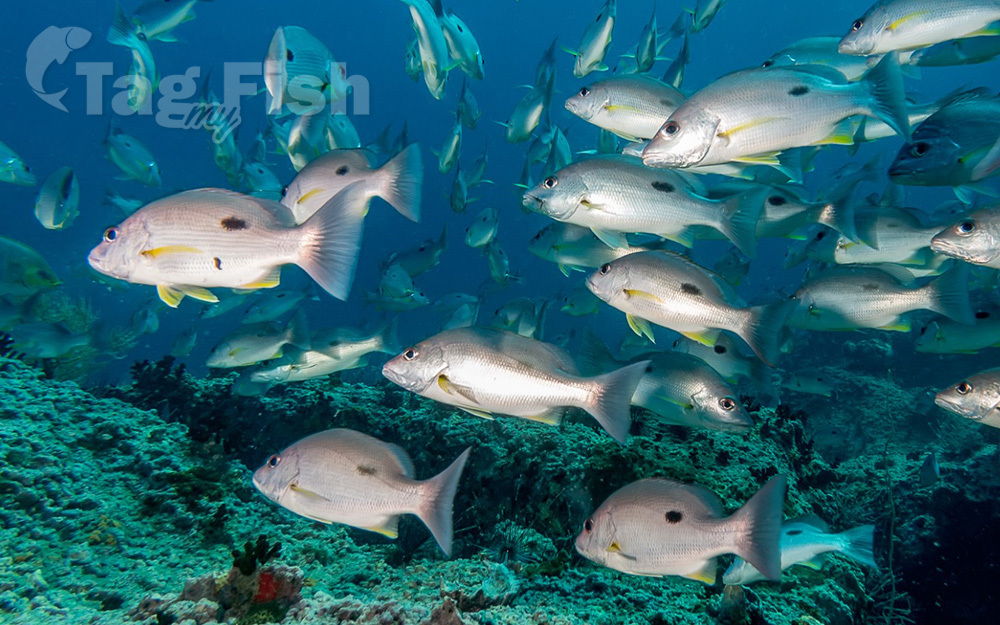Russell's snapper
(Lutjanus russellii)

Classification
General data
Lutjanus russellii has a moderately deep body to slender, its standard length being 2.6-2.8 times its depth. The forehead can be steep or moderately sloped and the knob and incision on the preopercle are poorly developed. The vomerine teeth are arranged in a triangular patch with a rearwards extension or in a rhombus and there is a patch of tiny teeth on the tongue.
The dorsal fin has 10 spines and 14 soft rays and the anal fin has 3 spines and 8 soft rays, the rear of the dorsal and anal fins is rounded, although the anal fin tip can be pointed. The pectoral fins contain 16-17 rays and the caudal fin is either truncate or weakly emarginate.
This species attains a maximum total length of 50 cm (20 in), although 30 cm (12 in) is more typical.
The overall colour of this fish is whitish to silvery greyish-pink with a brownish back. There is an indistinct black spot, sometimes very indistinct, on the lateral line below the front portion of the dorsal fin.
The dorsal and caudal fins have a reddish colour while the other fins are yellow. Juveniles are white in colour with four brown to blackish longitudinal stripes along the flanks, although these may be interrupted, and a horizontally-elongated black spot or ocellus on the lateral line.
Lutjanus russellii is found mainly in the western Pacific Ocean from the Gulf of Thailand and Sumatra east to Tonga, north to southern Japan and south to Australia. In Australian waters this species is found from Shark Bay and the offshore reefs in Western Australia, at Ashmore Reef in the Timor Sea, round the northern and eastern coasts as far south as Wollongong and maybe to Jervis Bay in New South Wales.
This species is found at depths between 3 and 80 m (9.8 and 262.5 ft) on offshore coral reefs as well as inshore rocky and coral reefs. The juveniles inhabit mangrove lined estuaries and the lower parts of freshwater streams.











